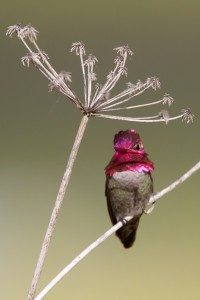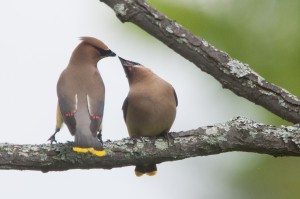Feast days and the changing of the guard
This morning is one of those days when there are such high spirits among the bird community that everything within earshot is caught up in the irresistible merriment.
It’s all because of the robins. “Clucking” and “chucking,” even bursting into brief explosions of song, they launch their attacks on the local berry crop. Gorged with fruits, they fly – if they can — up into the surrounding trees to briefly digest their plunder before dropping down for more.
Sometimes in the midst of the frenzy, they fly into my windows. It all suggests inebriation, but such impeccable experts as the staff at the Lindsay Wildlife Museum say, “no.” All this bumping into things and even failing to get airborne is, instead, a matter of over-consumption, not of consuming over-ripe berries.

I like the story that robins are feathered distilleries, holding berries in their crop until they’ve reached the desired alcoholic content. “No,” again say the killjoys. It’s simply (or not so simply) the excitement of a good meal in the company of others.
Their co-conspirators are often the sleek, elegant Cedar Waxwings. No half-digested berries dribble on their perfect, burnished feathers. Like masked robbers — or “Tao philosophers,” according to the poet Robert Francis in Waxwings — they share the feast without sacrificing decorum. Once they have their fill, they move on in tight groups, calling back and forth in their high-pitched “zees.”
The high spirits of the morning are shared by all the other birds in the neighborhood. Flickers, Red-breasted Nuthatches, chickadees — all sound off so as not to lose their place in the chorus.
This winter berry bacchanal will continue until most of the local berries are consumed and robins forsake the group to pair up for the serious business of building a nest and raising young.
Though the calendar reads only mid-February, spring is well underway in coastal California. March 21 may mark the celestial spring, but official spring here begins on February 5, the midpoint between the winter solstice and the vernal equinox.

Look around for confirmation – acacias in full golden glory, plums and almond in bloom, bulbs of every kind opening. And in the bird world, juncos and Bewick’s Wrens are singing, and Allen’s Hummingbirds have arrived from the south to begin their breeding season. Our resident Anna’s Hummingbird is already on her nest while at the opposite end of the size scale, Great-horned Owls are on their nests too.
Over the next couple of months our wintering sparrows and thrushes will leave for their breeding grounds, as other birds from the tropics arrive here for their spring and summer breeding season.

